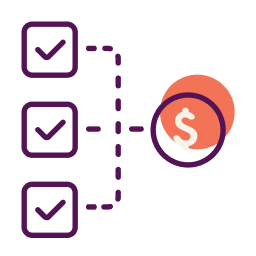With a growing and increasingly mobile world, community banks are having a harder time competing, both with their large commercial counterparts, as well as new fintech entrepreneurs exploiting the strict regulation in the banking industry.
But the final bell hasn’t tolled for these more compact financial institutions.
The challenges small banks face are not new, as the trend of declining community banks has been occurring for some time, according to FDIC data. Commercial banks have more locations and in many cases, more and updated services. Consumers travel often, use their debit cards frequently and don’t like paying fees for using ATMs not owned by their banks – all factors larger banks cater to better than small ones.
Additionally, banks are facing greater regulation due to the 2010 Dodd-Frank Act. Complying with these rules requires significant investment — an investment many community banks can’t afford.
These obstacles are unavoidable, but many analysts, particularly regional central banks across the U.S., believe community banks are able to stand side by side with larger financial institutions as a crucial part of the U.S. economy.
Selling the ‘community’ aspect
One key advantage small banks have is they are a neighbor in their communities. Like all local businesses, residents see these financial institutions as a defining trait of the neighborhood. This allows community banks to develop more personal relationships with customers and businesses in the area.
According to the Federal Reserve Bank of Kansas City, this benefit allows small banks to offer unique loans, accounts and other services based on in-depth information they have about their customers. Large banks, on the other hand, follow a “cookie-cutter” approach that may not give their customers the best products and services. Community banks can use this difference as a main selling point in marketing materials and customer service.
Marketing to the right customers — small businesses
The relationship aspect also ties into which potential customers small banks should seek. While individual consumers may still want the mobility and flexibility offered by large commercial banks, small businesses are fond of their local banks.
The Federal Reserve Bank of St. Louis explained many community banks approve loans for local businesses that can’t get financing from big banks. Additionally, these financing vehicles often come with more flexible and favorable terms compared to what businesses could receive from large banks, thereby promoting small banks as an attractive option for small business loans.
Considering businesses process larger transactions than individual consumers, community banks have a strong pool of revenue with these customers. Banks are generally able to charge a higher interest rate on small business loans than they can on mortgage and auto loans, thus earning a higher rate of return on small business customers than they do on other customers. All these financial institutions have to do is make sure they’re reaching more small business clients.
Getting ahead of technology
Small banks don’t have as big of a budget to implement and maintain new banking technology as their larger counterparts, but they must stay abreast of the latest innovations. Even if that simply means offering online banking, community banks need a way to become tech savvy and make life easier on their customers in a new technology-based age. If they don’t have the resources to optimize and monitor these services themselves, they should reach out to a third-party vendor that specializes in financial technology.
This drive toward innovation must also include back-office processes. Small banks should invest in fast and efficient underwriting software, storage infrastructure, and other technologies to provide speedy and accurate services for their customers.
This article was originally written on September 15, 2015 and updated on November 2, 2016.


Have at it! We'd love to hear from you and encourage a lively discussion among our users. Please help us keep our site clean and protect yourself. Refrain from posting overtly promotional content, and avoid disclosing personal information such as bank account or phone numbers.
Reviews Disclosure: The responses below are not provided or commissioned by the credit card, financing and service companies that appear on this site. Responses have not been reviewed, approved or otherwise endorsed by the credit card, financing and service companies and it is not their responsibility to ensure all posts and/or questions are answered.